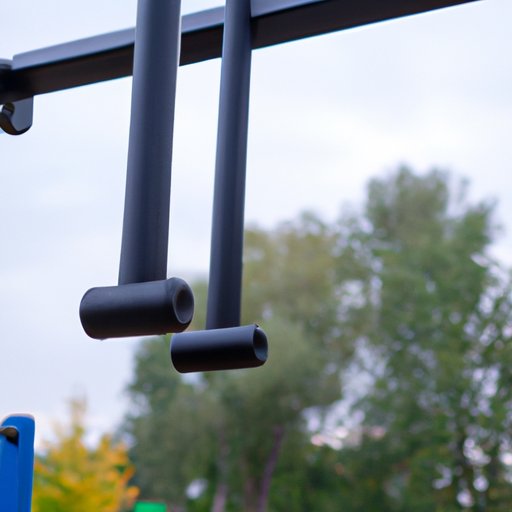
Introduction
Pull-ups are an essential exercise for anyone looking to build strength and improve fitness. This exercise targets multiple muscle groups at once, making it an efficient and effective way to develop upper body strength, endurance, and tone. However, many people find pull-ups challenging and struggle to perform them correctly. Common challenges when trying to improve pull-up performance include lack of upper body strength, weak grip, and difficulty maintaining proper form. Fortunately, there are various strategies you can use to improve your pull-up performance and achieve your fitness goals.
Start with the Basics
Before you can improve your pull-up performance, you need to master the basics. This involves learning the proper form and technique for executing a good pull-up. One essential tip is to keep your core tight and engaged throughout the exercise to avoid swinging or using momentum to lift your body. Also, aim to pull yourself up towards the bar by driving your elbows down towards your sides. This will help engage your back muscles and avoid using too much bicep or shoulder strength.
If you are new to pull-ups, you may find that the exercise feels too challenging. In that case, consider trying beginner-friendly modifications such as assisted pull-ups or jumping pull-ups. These variations can help you build strength and better understand the proper mechanics of the exercise. Over time, you can gradually increase the difficulty of your pull-up routine by decreasing the amount of assistance used and increasing the number of repetitions.
Mix It Up
Beyond pull-ups, there are many other exercises and activities you can do to improve your overall strength and endurance. For example, incorporating lunges, squats, and sprints into your routine can help build lower body strength and increase your cardiovascular endurance. Additionally, cross-training with exercises such as yoga, Pilates, or boxing can help develop flexibility, balance, and coordination, which are essential for performing pull-ups with proper form and control.
Work on Your Grip
Another common challenge people face when trying to improve their pull-up performance is weak grip strength. You may find that you can perform only a few pull-ups before your grip gives out, making it difficult to continue the exercise. In that case, it’s crucial to include grip-strengthening exercises in your routine. Some effective exercises to improve grip strength include deadlifts, farmer’s walks, and hanging from a bar for as long as possible. Additionally, consider using grip strengtheners such as hand grips or grip balls to develop your grip over time.
Set Goals
When working to improve your pull-up performance, it’s essential to set clear and achievable goals. Consider using the SMART goal framework, which stands for Specific, Measurable, Achievable, Relevant, and Time-bound. Specific goals could be hitting a specific number of pull-ups or improving your grip strength by a certain percentage. Measurable goals could involve tracking your progress using a workout log or app. Achievable goals should be realistic based on your current fitness level and ability. Relevant goals should align with your broader fitness goals and priorities. Finally, time-bound goals should have a specific end date or timeline for achievement.
Use Assistance
Another strategy that can help you improve your pull-up performance is using assistance. This involves tools and resources, such as resistance bands or pull-up machines, that can help support your body weight during the exercise. Using assistance can help you slowly build strength and endurance over time, which can eventually lead to unassisted pull-ups. However, it’s essential to balance using assistance with building strength and gradually decreasing the level of assistance used to avoid becoming reliant on the tool.
Incorporate Weightlifting
Improving your overall strength is critical to achieving better pull-up performance. Incorporating weightlifting exercises that target specific muscle groups involved in pull-ups can be particularly helpful. For example, exercises such as lat pulldowns, rows, and bench press can help develop back and arm strength needed for pull-ups. However, it’s essential to focus on proper form and technique to avoid injury and maximize the benefits of these exercises. If you are not familiar with weightlifting, consider working with a qualified personal trainer to develop a tailored strength training plan.
Consider Hiring a Trainer
If you are struggling to improve your pull-up performance or want to take your fitness goals to the next level, consider working with a personal trainer. A knowledgeable trainer can help you develop a customized workout plan that targets your specific needs and goals. They can also provide guidance on proper form, technique, and nutrition to better support your fitness progress. When looking for a personal trainer, consider their credentials, experience, and communication style. Additionally, be aware of the potential costs and time commitments involved in working with a trainer.
Conclusion
Improving your pull-up performance takes time, patience, and persistence. By starting with the basics, mixing up your routine, working on your grip, setting goals, using assistance, incorporating weightlifting, and considering hiring a trainer, you can develop the strength, endurance, and technique needed to excel in this challenging exercise. Remember to celebrate small successes along the way, and keep pushing yourself to achieve new heights in your fitness journey.




